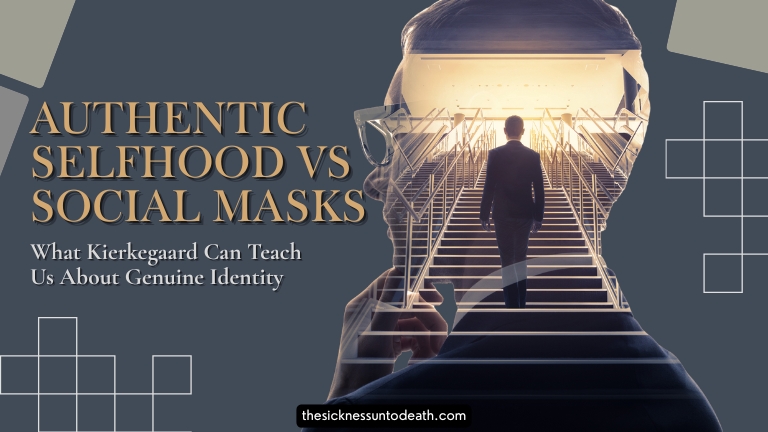In today’s world, it’s easy to feel like we’re constantly performing. Whether it’s curating the perfect photo on Instagram, crafting the ideal LinkedIn profile, or just trying to “fit in,” many of us are wearing social masks more often than not. But what happens when those masks start to feel more real than who we actually are?
This question—what it means to truly be yourself—is something the 19th-century Danish philosopher Søren Kierkegaard explored in depth. And surprisingly, his ideas about selfhood and society feel more relevant than ever.
Kierkegaard and the Problem of the Crowd
Kierkegaard was fascinated (and worried) by how people lose themselves in “the crowd”—what we might now call the collective pressure of society or, in modern terms, social media. He argued that when we stop thinking for ourselves and start living according to other people’s expectations, we drift further away from our true identity.
He didn’t mean “the crowd” in just a physical sense. It was more about the psychological pressure to conform, to be liked, to avoid standing out. Sound familiar?
In The Sickness Unto Death, Kierkegaard describes a form of despair that comes from not being your real self—from living inauthentically. And in a world where we’re constantly encouraged to present the best version of ourselves online, it’s easy to see how that kind of despair could creep in without us even noticing.
Social Media and the Age of Performance
Let’s be honest: social media is amazing for connection, inspiration, and creativity. But it also sets up a constant loop of comparison and performance. You’re rewarded not for being real, but for being polished. Authenticity often gets lost behind filters, captions, and algorithms.
Kierkegaard would probably say we’ve replaced our inward journey with outward applause. And that’s the crux of the issue—if we’re always performing for others, how do we ever really know ourselves?
So, What Does It Mean to Be Authentic?
For Kierkegaard, living authentically means looking inward and being honest about who you are—flaws, fears, contradictions and all. It’s not about rejecting society entirely, but about refusing to let it define you.
Authenticity is less about being “unique” and more about being grounded. It’s about becoming someone you’re proud to be when no one’s watching. That’s not always easy, but it’s worth it.
How to Start Removing the Mask
Kierkegaard didn’t offer easy answers, but he did encourage us to wrestle with big questions. If you’re looking to reconnect with your authentic self, here are a few simple steps inspired by his philosophy:
- Spend time alone — Not scrolling, just reflecting.
- Question your motivations — Are you doing this for you, or for approval?
- Stop comparing — Someone else’s highlight reel isn’t your reality.
Embrace the uncomfortable — Growth starts where comfort ends.
Final Thoughts
In a culture that often rewards appearance over substance, it takes courage to live authentically. But as Kierkegaard teaches us, the cost of ignoring your real self is much higher than the discomfort of showing up as you truly are.
So next time you’re tempted to hide behind the perfect post or go along with the crowd, pause and ask: Is this really me?
P.S. If you’re intrigued by these ideas, don’t forget to check out The Sickness Unto Death: A Modern Translation for the 21st Century—a fresh take on Kierkegaard’s classic that makes his insights more accessible than ever.

